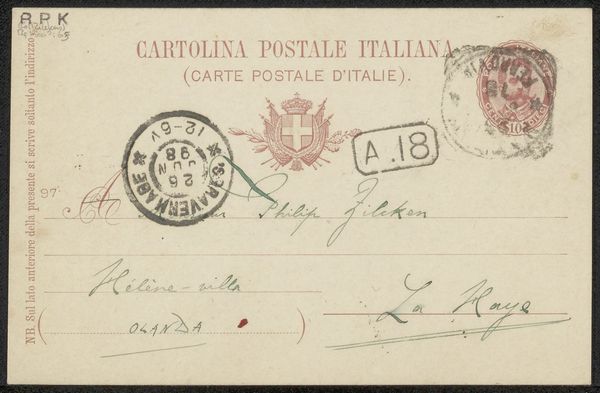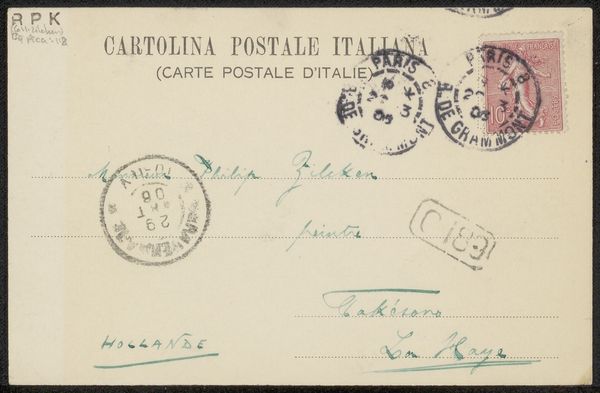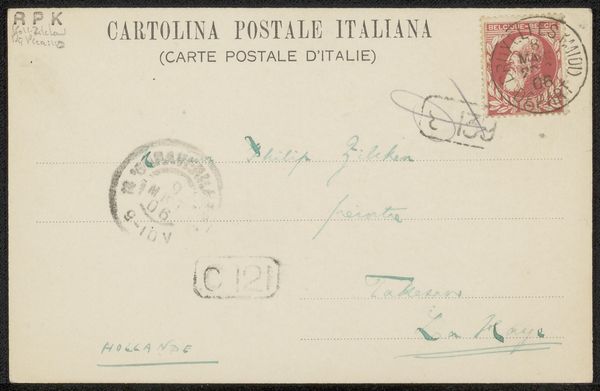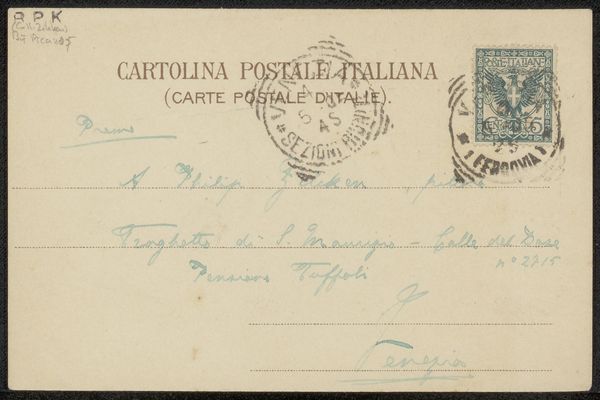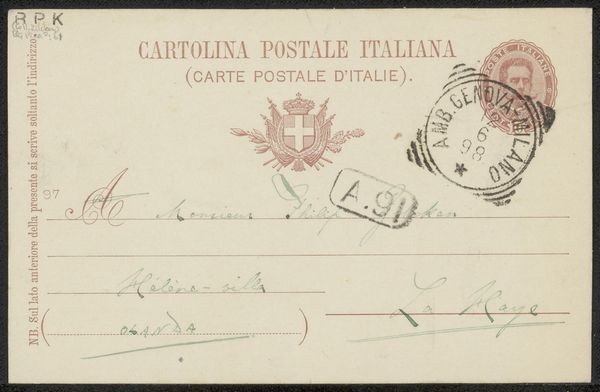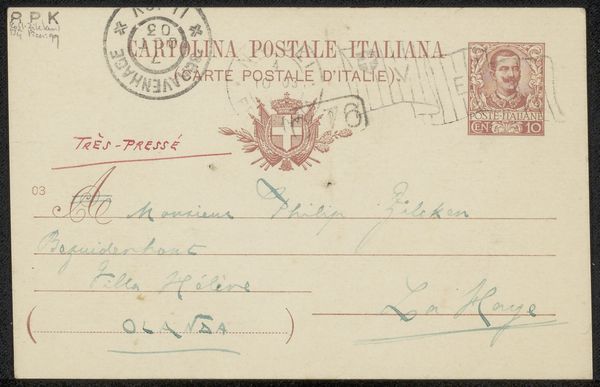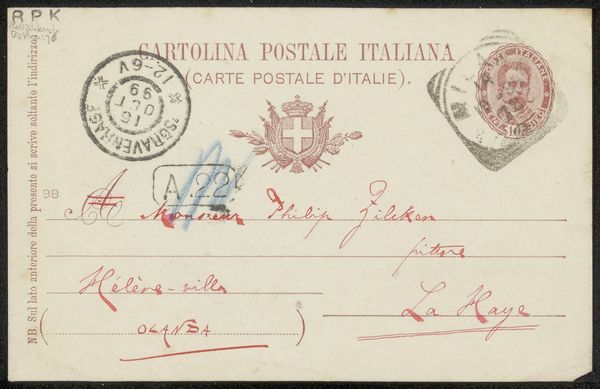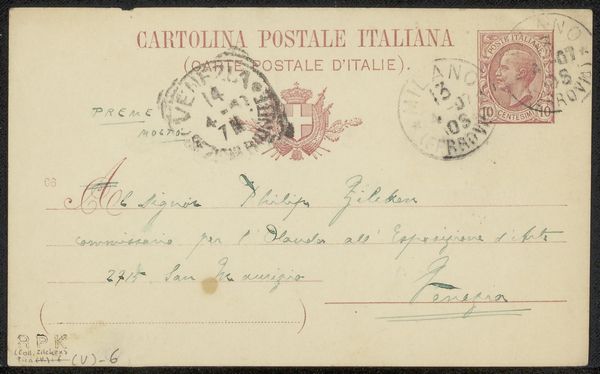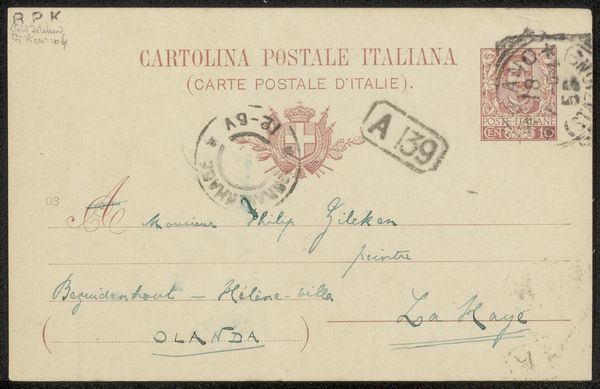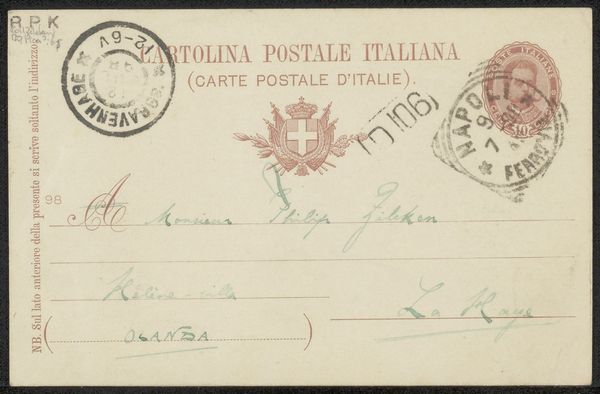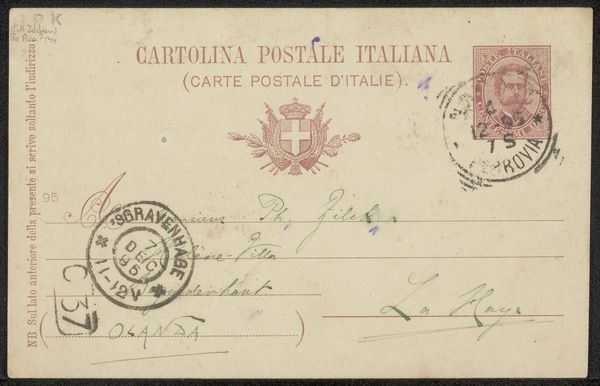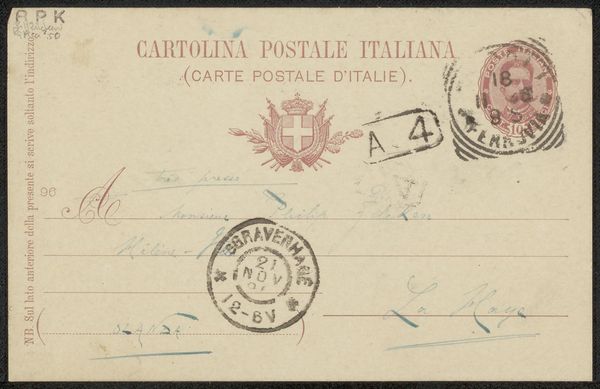
ink, pen
#
portrait
#
hand-lettering
#
old engraving style
#
hand drawn type
#
hand lettering
#
personal sketchbook
#
ink
#
hand-drawn typeface
#
pen-ink sketch
#
pen work
#
sketchbook drawing
#
pen
#
sketchbook art
#
calligraphy
Copyright: Rijks Museum: Open Domain
Curator: This unassuming postcard, "Briefkaart aan Philip Zilcken," likely from 1905, provides an intimate glimpse into artistic networks of the time. Its materiality, ink on paper, feels delicate, fragile, and yet it served to connect individuals across geographical distances. Editor: It's fascinating how a simple postcard can act as a window into the past. Looking at it, I’m curious: How do you interpret this work beyond its surface appearance? Curator: For me, the handwritten text and its materiality are especially evocative. Consider that this isn't merely a functional message; the style of writing, the choice of language (Italian, potentially French), speaks to a shared cultural sphere among artists and intellectuals. This was a time of vibrant exchange and collaboration despite, or perhaps in defiance of, burgeoning nationalisms. Whose voices might be missing from this conversation? Editor: That's a good point. We don't know the sender's social standing or relationship to Philip Zilcken. So how can we analyze art in relation to the network? Curator: Exactly! Who had the privilege to participate in these exchanges? Understanding the context of colonialism and social hierarchies within the art world at the time allows us to question power structures embedded in seemingly benign correspondence. Did Zilcken's social standing influence who reached out? And in what ways were artists excluded due to their gender or ethnicity? What appears to be a simple exchange may, in reality, tell a much broader story about class, gender, and access. Editor: It’s interesting to think of a postcard as holding so much complexity. Curator: Indeed! By looking beyond the immediately visible, we can uncover hidden dimensions within the art itself, and more importantly, pose crucial questions about history and its legacy in our present. Editor: Thank you, I now see that examining who participates, and who *doesn’t*, is vital to understanding the cultural landscape.
Comments
No comments
Be the first to comment and join the conversation on the ultimate creative platform.
